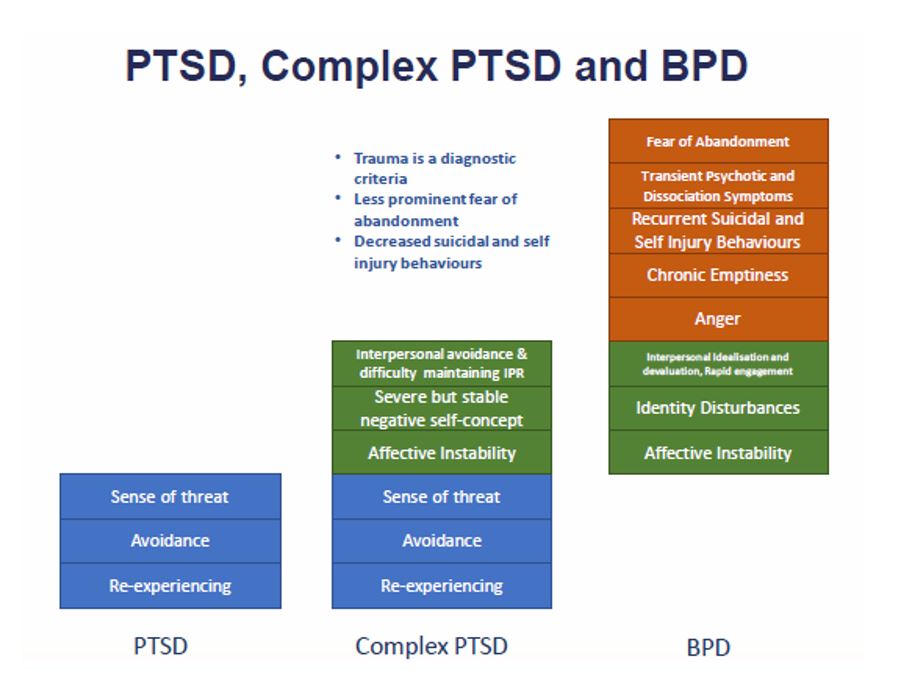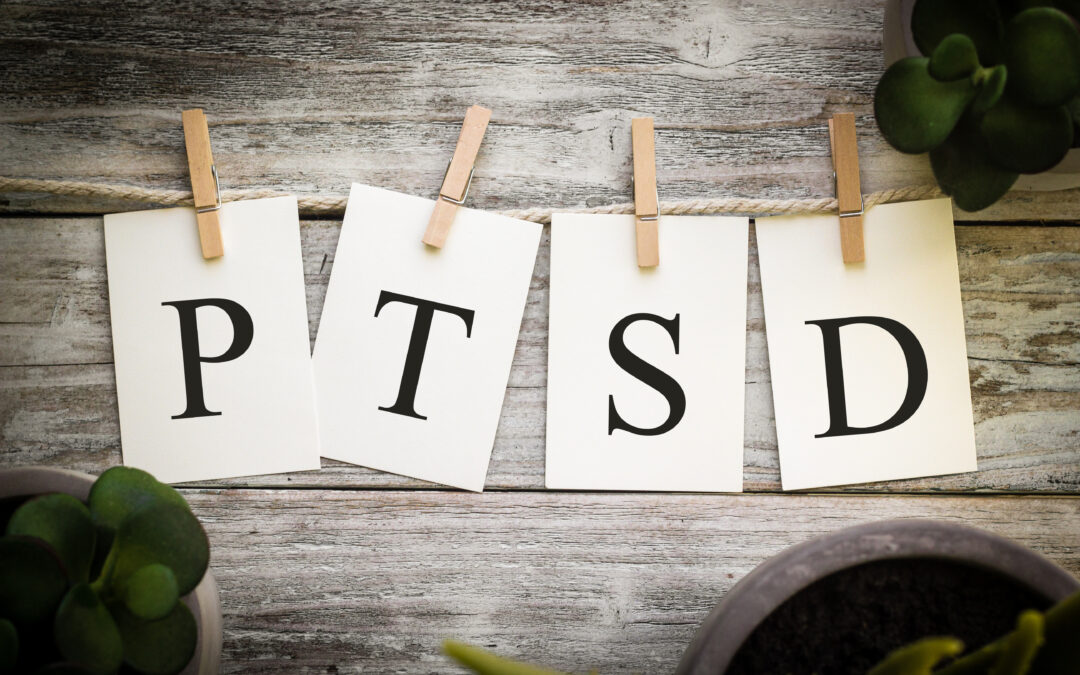Many individuals may have been inaccurately diagnosed or categorised under PTSD or Borderline Personality Disorder (BPD) due to the unavailability of Complex Post Traumatic Stress Disorder as a diagnostic category. I would argue that all psychological disorders stem from trauma, but I’ll save that discussion for another article! Below I’ll discuss PTSD symptoms for a diagnosis in the DSM 5, and will describe some of the issues with the diagnostic criteria.
Before I go on though, I want to let you know, that just because your symptoms may not meet the criteria for a psychological disorder, it does not mean you haven’t experienced trauma that has greatly impacted you. At a guess, I would say there are many more people who have experienced trauma, and are impacted by it, that don’t have a trauma based disorder.
PTSD
Someone can develop PTSD after experiencing, witnessing or repeatedly hearing about actual or threatened death, sexual violence or serious injury. Many people experience the distressing symptoms below, but if they persist for more than a month after the event, then the person might have PTSD.
PTSD symptoms (DSM 5 criteria)
*No-one will have all of the symptoms below.
*I have re-worded the PTSD criteria for ease of understanding. The following are not to be used for diagnostic purposes.
Presence of one (or more) of the following
1. Intrusion Symptoms – This includes symptoms where either the person’s memory of the event, or the feelings they felt at the time, ‘intrude’ on the person without their control. The ways this may happen include
- Having repeated and deeply upsetting memories of the event enter your mind, without being able to control them.
- Having repeated and distressing dreams / nightmares which include memories of the actual event, or feelings from the event.
- Having flashbacks, which is where you can feel or act as if the traumatic event is occurring again.
- Getting triggered by something that resembles the event. Triggers can be visual of course, but can also be caused by hearing or smelling something. Sometimes the person will know what triggered them, but often they won’t.
- When triggered, experiencing physiological reactions as well, like racing heart, sweaty hands etc.

Presence of one (or both) of the following
2. Avoidance – Avoiding things that are associated with the traumatic event, like people, places, objects or conversations.
- Trying to avoid upsetting memories, thoughts or feelings about the event.
- Trying to avoid external reminders of the event that may start you thinking or feeling about it. This might include people, places, activities, conversations, objects or situations.
Presence of two (or more) of the following
3. Negative Alterations in Cognitions and Mood – Negative changes to the way you think and feel.
- Being unable to remember the entire event, or some parts of it.
- Having persistent negative beliefs or expectations about yourself, other people or the world. For example “I am bad” or “No-one can be trusted” or “The world is dangerous” or “My nervous system is completely ruined”.
- Having persistent, but distorted thoughts about the causes or consequences of the traumatic event, that lead you to blame yourself. For example, an adult blaming themselves as a young child for not stopping a sexually abusive uncle, when this was developmentally impossible.
- Feeling as though you’re in a negative emotional state most of the time, like fear, horror, anger, guilt or shame.
- Not feeling like doing the activities you used to do.
- Feeling detached or not feeling as close to others as yo used to be. Feeling alienated.
- Persistently not being able to experience positive emotions like happiness, satisfaction or loving feelings.
Presence of two (or more) of the following
4. Alterations in Arousal and Reactivity – . Marked alterations in arousal and reactivity associated with the traumatic event(s), beginning or worsening after the traumatic event(s) occurred, as evidenced by two (or more) of the following:
- Feeling irritable or having angry outbursts without much of a trigger.
- Being reckless or destructive. For example, engaging in a lot of sex after a rape, when this is not typical for you or driving fast or dangerously.
- Feeling like you’re always on alert for danger, or always looking over your shoulder.
- Being very jumpy and easy to scare.
- Having difficulty concentrating.
- Having difficulty falling or staying asleep, or being having very restless sleep.
The symptoms must cause your distress or make you have trouble working/studying etc.
3.1.2 Issues with the PTSD criteria
- There are many people who have PTSD symptoms, that have not experienced “actual or threatened death, serious injury, or sexual violence”, so they don’t qualify for a diagnosis.
- The PTSD criteria does not address the trauma experiences of someone who has experienced repeated and prolonged trauma, such as occurs in child abuse or family violence.
- PTSD does not cover the full breadth of trauma symptoms. Those who have experienced repeated and prolonged trauma, may be suffering from complex trauma, which has more symptoms than PTSD.
- Read about Complex Post Traumatic Stress Disorder (CPTSD) in the Essential Complex Trauma Guide. CPTSD (established in 2022) goes someway to explaining the breadth of complex trauma.

Image source: BPD Foundation
This diagram shows the overlap between three of the main trauma disorders.
PTSD effectively describes that impacts of single incident traumas, but it falls short of addressing the complexities of repeated and prolonged trauma. Recently, the inclusion of CPTSD as a diagnosis, has gone some way in addressing these shortfalls.
Read more
Take the First Step Towards Healing
If you're struggling with complex trauma, don't face it alone. Contact me today and start your journey to trauma recovery.
Healing Through Connection Exploring Melissa Harte’s Expanded Focusing Task for Trauma
I am honoured to bring a deeply meaningful approach to our work together—a method I learned directly from my own psychologist and mentor, the late Melissa Harte. Melissa was not only an expert in Emotion-Focused Therapy (EFT) but also developed what she called the...
Why Emotion-Focused Therapy Believes Emotions Come First in Trauma Healing
In the world of psychology, it’s often said that changing your thoughts will lead to emotional change. This is the basis of Cognitive Behavioral Therapy (CBT), which says that by shifting our thoughts, we can influence how we feel. But what if emotions come first,...
Exploring Betrayal Trauma
Betrayal trauma (Freyd, 1994) happens when the people who are supposed to care for us as children, such as parents, cause deep emotional harm by betraying out trust. In this article, I will focus on betrayal trauma within the parent-child relationship, though similar...




